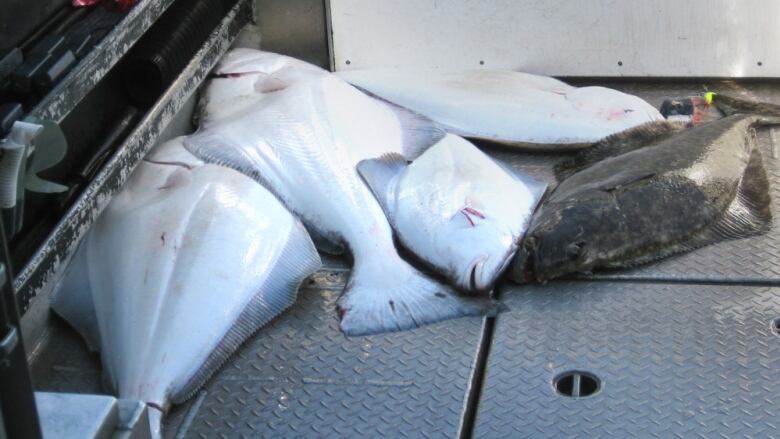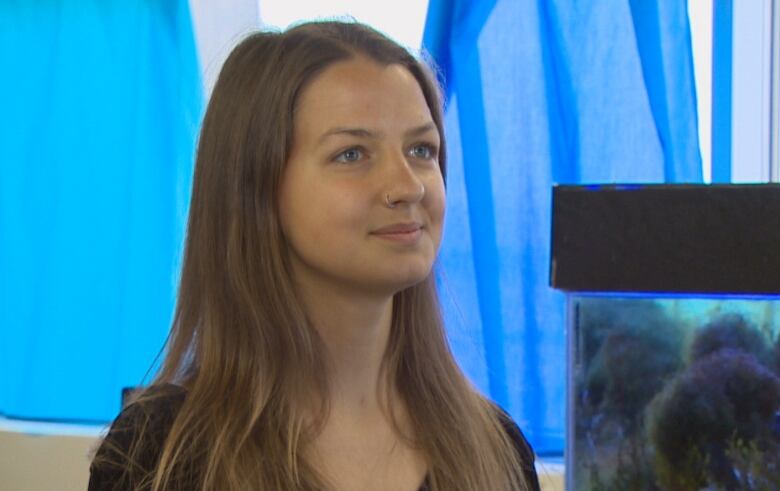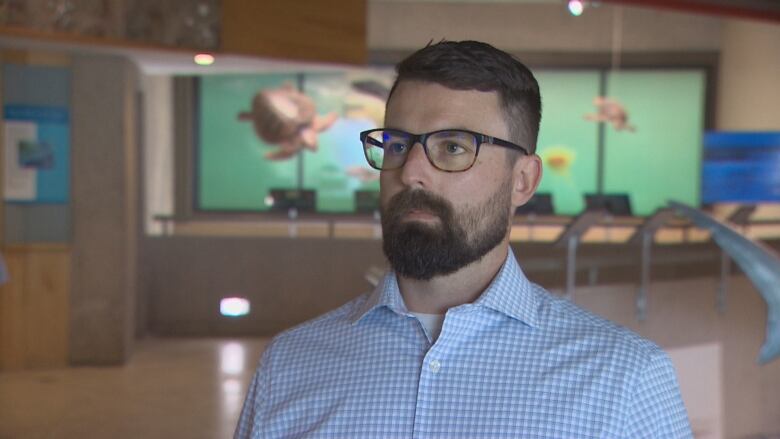Review of Atlantic halibut survey raises sustainability questions
Halibut industry says results of joint industry-government survey about halibut and bycatch are misleading

For more than two decades, Atlantic halibut fishermen have baited their hooks and dropped them to the ocean bottom off Nova Scotia and Newfoundland as part of a collaboration between the fishing industry and the Department of Fisheries and Oceans.
The annual May to July halibut longline survey is used to predict halibut abundance in a thriving fishery worth $60 million.
Dalhousie University biology student Isabelle Hurley wanted to know if the data told another story. She looked at what else was caughtso-called bycatch in the survey between 1998 and 2016.
"We found that over 100 species were being caught as bycatch and some of those included some threatened species listed under Canada's Species at Risk Act," saidHurley.
Hurley recently published the results of her analysis with three DFO scientists as co-authors.

The analysis found 70 per cent of the total catch by weight and 85 per cent by number of individuals was bycatch, everything from species at risk like wolffish to Atlantic cod to sharks.
"It is a high level of bycatch," she said.
Spiny dogfish, Atlantic cod, barndoor skateand white hake were the bycatch species caught most often during the survey.
Seals, gulls, corals, even 42 Greenland sharks were capturedover the 18-year period.
It was the first time the halibut survey was reviewed for bycatch.
The analysis was funded by the Natural Sciences and Engineering Research Council of Canada.
Industry says analysis is misleading
But the halibut industry saidthe survey doesn't reflect what's happening in the commercial halibut fishery.
"I'm a little concerned that it is a misleading representation," saidBruce Chapman, executive director of the Atlantic Halibut Council, which is made up of 14 companies that buy and sell halibut.
The commercial fishery takes place at different times and locations in Atlantic Canadian waters and Chapman saidthe results are almost the reverse of what is seen in the survey.
Why halibut is a successful fishery
Halibut is a "mixed-species fishery," meaning fishermen are allowed to keep bycatch like cod, haddock and some other non-target species.
"Eighty six per cent of the catch is for those fisheries that are open and thereis about 14 per cent that are truly incidental catch," said Chapman.
The Atlantic halibut population is healthy and quotas have been rising in recent years.
The fishery was reconfirmed as environmentally sustainable in 2018 by the Marine Stewardship Council, which also looks at the impact of incidental catch on the recovery of species in trouble.

"They've confirmed that that is not the case, that we do not impair the recovery of some of those stocks which are under concern," said Chapman.
In its latest assessment,MSC said the fishery uses a science-based approach to manage its interactions and impacts on the ecosystem. It also said more information is needed on bycatch in the fishery.
DFO biologist Brendan Wringe is a co-author on the Atlantic halibut survey bycatch review. He saidthe department has "expanded the analysis" to the commercial halibut fishery and is awaiting a peer review of its assessment.

Like Chapman,Wringe points out many of the species identified as halibut bycatch are species fishermen are licensed to catch and keep.
He saidthe survey is not reflective of bycatch levels in the commercial fishery.
"In the commercial fishery, they are going out and targeting halibut more closely than what they are in the survey," said Wringe.
"The proportion of non-halibut catch is lower in the commercial fishery."
Eye-opening report
Shannon Arnold of the Ecology Action Centre saidthe most significant finding in Hurley's review was that four species designated as at risk by Canada and another 14 species under assessment for risk were pulled up as bycatch.
She saidthe analysis DFOis doing forthe commercial halibut fishery should be done across all commercial fisheries.
"I think that it shows us that we just need to be moving more quickly to fund this analysis. It was really important and it was kind of a one-off," she said.
As forHurley, she's glad what started as her undergraduate thesis has generated new information and discussion around the issue of bycatch.












_(720p).jpg)


 OFFICIAL HD MUSIC VIDEO.jpg)
.jpg)



























































































